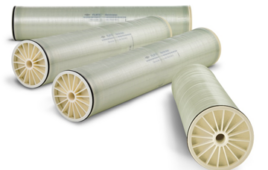Viewed
as a potential target in the global effort to reduce climate change,
atmospheric black carbon particles absorb significantly less sunlight
than scientists predicted, raising new questions about the impact of
black carbon on atmospheric warming, an international team of
researchers, including climate chemists from Boston College, report
today in the latest edition of the journal Science.
Mathematical
models and laboratory experiments used to study airborne soot particles
led to projections that the absorption-boosting chemicals that coat
black carbon could yield an increase in absorption by as much as a
factor of two. But field studies in smoggy California cities found black
carbon absorption enhancements of just 6%, suggesting that
climate models may be overestimating warming by black carbon, the
researchers report.
The
surprising results highlight the early challenges in a nascent sector
of climate science and could have implications for regulatory efforts to
reduce the production of black carbon, or soot, by curbing the burning
of fossil fuels. Still, scientists agree that black carbon in the
atmosphere has a significant effect on global and regional climate, with
earlier studies ranking the warming effects of black carbon particles
second only to carbon dioxide gas.
“The
team’s field measurements in California showed the enhancement of
absorption was very small—approximately 6% instead of by a
factor of two,” said Boston College Professor of Chemistry Paul
Davidovits, an authority on airborne particles, known as aerosols. “In
one respect, it shows that nature is much more complicated than our
initial laboratory experiments and modeling indicated. Now we will try
to unravel and understand that complexity.”
The
historic role of black carbon soot in climate change has been well
documented by scientists, most notably in the study of ice samples taken
from deep within glaciers. For the past several years, Davidovits has
collaborated with Aerodyne Research Inc., and colleagues from
universities and government labs in the U.S., Canada and Finland. Their
research has focused on the chemical and optical properties of
sub-micron airborne particles of black carbon produced by commercial and
industrial activity.
Unlike
carbon dioxide and other greenhouse gasses, which can survive in the
atmosphere for decades and centuries, black carbon has a relatively
short life span of approximately one to two weeks. Black carbon is part
of a group of pollution sources known as Short-Lived Climate Forcers
(SLCFs), including methane gas and ozone, which are produced on earth.
During
their lifetime, black carbon particles are coated with airborne
chemicals, which sophisticated laboratory tests have shown can act like
lenses capable of increasing the ability of the particles to absorb
sunlight and heat the atmosphere. That has raised a critical question as
to whether targeting black carbon emissions in an effort to reduce
climate change could yield relatively quick results on a regional or
global level.
Led
by principal investigators Christopher D. Cappa, a professor of
engineering at the University of California, Davis, and Timothy B.
Onasch, principal scientist at Aerodyne and an associate research
professor of chemistry at Boston College, the team analyzed air samples
near the California cities of Los Angeles, San Francisco and Sacramento.
Researchers
tested air samples using a combination of real-time techniques,
including aerosol mass spectrometry and photoacoustic spectroscopy.
These techniques are capable of making measurements to determine the
chemical, physical and optical properties of the black carbon particles,
said Onasch, whose Billerica, MA-based company has developed the
aerosol mass spectrometer instruments.
Onasch
said the recent findings set the stage for further studies around the
world under different atmospheric conditions in order to better
understand how chemical coatings from a range of emission sources affect
the absorptive properties of black carbon.
“When
you put a soot particle into the atmosphere, we known it contains an
elemental carbon component and we know what it’s absorption will be
based on mass and size,” said Onasch. “But black carbon particles in the
air are constantly changing. They collect inorganic and organic
materials, they grow, change shapes, and change composition. These
changes affect the absorption or warming capability of the black carbon.
So the question remains: to what extent exactly?”
The
recent findings only add to the challenge of understanding complex
chemical activity in the atmosphere, said Davidovits, whose research is
supported by the National Science Foundation’s Atmospheric Chemistry
division and the U.S. Department of Energy’s Atmospheric System Research
program.
“These
findings do require us to reduce our projections about the amount of
heating soot produces, at least under some experimental conditions. But
the findings don’t point to soot as being a harmless climate forcer,”
said Davidovits. “Soot remains an important climate heating agent, as
well as a health problem that has been well documented.”
Source: Boston College




